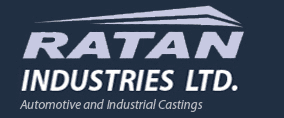Before considering an Industrial Wastewater treatment solution, you must first know about the different kinds of industrial wastewater and their pollutants. These pollutants are commonly found in industrial settings. This wastewater is usually discharged into the local sewer system, which must meet local environmental regulations. They also contain other contaminants such as detergents, solvents, grit, and lubricants. In addition to the pollutants mentioned above, these wastewater may contain heavy metals, which are toxic to aquatic life.
Depending on the location of your home, you might have to purchase an STP to handle your sewage. Generally, residential buildings need at least one STP to treat sewage. Many STPs are located underground, making them difficult to maintain. Moreover, you may not be able to inspect them without hiring an expert. It is better to consult a professional if you have any doubts about the process.
Treatment methods
The different types of industrial wastewater have varying volumes and quality. They can be highly biodegradable or contain compounds that are refractory to treatment. Typical contaminants include organic and inorganic compounds, heavy metals, and radioactive material. The treatment of these pollutants varies considerably based on the type of manufacturing process. Here, we will examine some of the most common contaminants that industrial wastewater may contain and their treatment methods.
The primary treatment process involves the separation of precipitable contaminants and treatments in large tanks. These tanks are designed to reduce grit and sedimentation using different equipment types. Some of these tanks include clarifiers, settling tanks, and UASBs. Coarse solids may be reduced using combinators or grinders. These coarse solids are then removed during downstream treatment processes. Activated sludge may also undergo aeration to prevent it from settling.

Disinfectants are added to wastewater during the process of treatment. Common disinfectants include chlorine and ultraviolet rays. Chlorine, a greenish-yellow gas, changes into liquid under high pressure. Chlorine effectively kills pathogenic microorganisms and has been widely used in tertiary treatment. Ultraviolet rays are most commonly used in tertiary treatment.

Hybrid treatments can be used to get reusable water from industrial effluent. Hybrid treatment processes involve the use of various by-products and solid wastes from different industries. These technologies can be used to maximize the concept of waste to wealth. For this, advanced simulation models must be used. Unlike conventional methods, hybrid treatment is more cost-effective and time-efficient. Combined with chemical treatment, these technologies have the potential to produce reusable water.
The different types of industrial wastewater and their treatment methods depend on the contamination source. Fossil-fuel power plants, for example, discharge significant amounts of pollutants that can be dangerous for both people and animals. Industrial wastewater from these facilities is often discharged into local sewer systems, which have strict environmental requirements. It contains many contaminants, including reclaimed chlorinated water and haloacetic acid.
Pollutants
The pollution of waterways from various industries can lead to several health hazards, especially for aquatic life. Heavy metals and chemicals found in wastewater can deplete aquatic organisms' life span and reproduction ability. They may even make their way up the food chain and end up in the bodies of large fish. This can result in an enormous environmental impact and lead to a costly clean-up effort. Fortunately, solutions are available that will minimize the effect of industrial wastewater.
Industrial wastewater quality and volume are variable and can contain various organic and inorganic compounds. Some pollutants are biodegradable, and others are not. Some contaminants may be toxic, reactive, or even carcinogenic. Because of these effects, industrial wastewater must undergo pretreatment before being discharged into the public sewer system. Industrial pretreatment can significantly reduce the risk of widespread water pollution. It is also an effective way to prevent the overproduction of hazardous chemicals affecting aquatic life.
As a result of these concerns, various technologies and strategies are being developed to improve wastewater quality. Many of the significant wastewater-producing industries are implementing these strategies. A new wastewater treatment process can remove many of these pollutants. The process is called bioremediation, which can reduce the levels of other contaminants in water. The solution depends on the source and its location. Pollutants constitute a significant source of water pollution, so it is imperative to treat wastewater properly to protect aquatic life.
While sewage treatment is the most common way to eliminate pollutants, other options are available. For example, industrial facilities can opt for an integrated pollution prevention and control (IPC) program. In the U.S., there are over 16,000 POTWs, which treat over 75% of the nation's wastewater. They are owned by U.S. government agencies and set minimum standards for pollution-producing wastes.







































Share Post